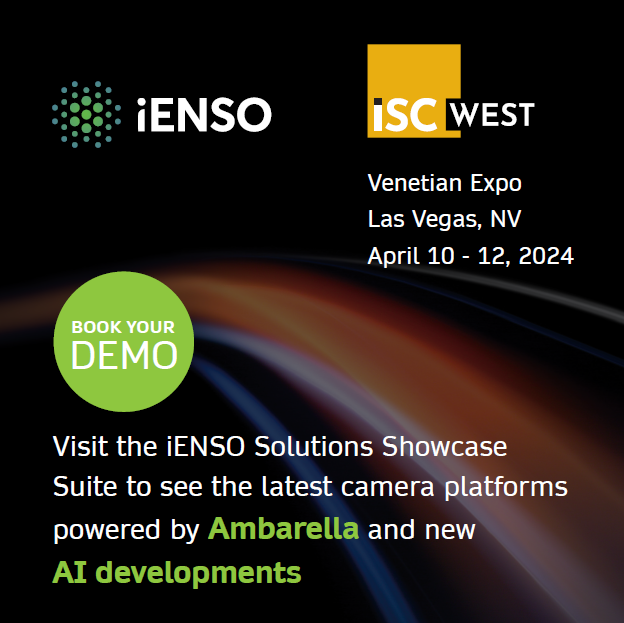Pandemic sparks rising demand for vision capability and Edge AI innovation
7 things you need to know if embedded vision is on your product roadmap for 2021
Richmond Hill, ON. – “Now is the time to take a hard look at what it will take to get your embedded vision product to market in 2021, and a jump on rising demand driven by the pandemic,” says iENSO President Sebastien Dignard.
“A growing variety of consumer products do, and will, incorporate embedded vision and Edge AI,” he says. “iENSO’s conversations with product companies over the past six months suggest the pandemic has accelerated this trend.”
iENSO, the embedded vision collaboration partner for major international brands, is also tracking the turbulent impact which COVID-19 is having on the design, manufacturing and time to market of any new embedded vision product.
“With the pandemic having such a disruptive impact on the predictable flow of goods across borders, product companies are advised to think hard about how best to mitigate their risks in bringing a new embedded vision and Edge AI-enabled product to market,” says Dignard.
Meanwhile, market research company Omdia forecasts that global AI edge chipset revenue for vision will grow from US$7.7 billion in 2019 to $51.9 billion by 2025, with use cases across a variety of industries.
From iENSO’s perspective, consumers are looking for greater convenience as they spend more time at home. Employers and health officials need AI-driven and automated tools to monitor public spaces and job sites and ensure health and safety protocols are being followed.
“All this is impacting the design of everything from home appliances and automation systems, to construction site surveillance and security systems, and even interactive electronic toys to help busy parents keep kids and pets occupied as they continue to work from home,” says Dignard.
For example, a decade ago, a vision system embedded in the door of a refrigerator was intended to serve as a simple window – browse for a snack without holding the door open and wasting energy.
“Today, such vision capability is coupled with the added intelligence to track brand penetration, expiration dates and reduce food waste, create a grocery list or suggest a recipe, and collect information about consumer tastes and habits,” says Dignard. “All of this adds value and is of critical importance to the future of our customers’ market share.”
If embedded vision is on your product roadmap for 2021, here are some tips:
1. How products are engineered and where they are manufactured will change.
This is being driven by the fact that component suppliers and contract manufacturers are primarily based in China. Pandemic-related delays and political tensions have significantly impacted delivery times for components and the complexities of supply.
2. Working with overseas contract manufacturers has never been for the faint of heart.
Product companies looking to advance their product roadmaps on time, on budget, and to a suitable standard of quality have always faced challenges with managing Asian contract manufacturers due to differences in culture, language, time, and IP protection standards. The pressures of the pandemic have only intensified this dynamic. With personnel shortages and production line shutdowns, contract manufacturers are prioritizing larger orders and longstanding relationships over new entrants into the market.
3. Recent declines in some component and design costs doesn’t mean that embedded vision has become “easy.”
The complexities of configuration and tuning an embedded vision system specific to its intended application have arguably increased and require specialized expertise. Although the combination of cost-effective processors and sensors have many product managers dreaming of competitive pricing for their own products, these cost-effective components introduce a certain amount of risk during the engineering and integration phase as tuning is needed in the design phase. When combined with new Edge AI needs and the requirement to seamlessly connect to the cloud, companies are looking for more than the original design manufacturer (ODM) model.
4. Integration remains the big challenge.
Further to that point, components must be sourced, integrated, and tuned appropriate to the intended application. The module must be designed to be manufactured at scale, at a cost point, and to a consistent standard of quality that will support a product company’s business objectives. With the pandemic causing disruptions in the supply chain, the availability of components is throwing a wrench into product roadmap planning.
“We have even seen instances where components had to be quickly integrated and qualified to replace parts that were now causing unacceptable supply chain risks for our customers,” said Mike Liwak, CPO at iENSO. “We had to make sure image quality and reliability were not compromised during this process and that our clients had ease of mind knowing we were leading the charge with the offshore contract manufacturer (CM).”
5. What about the domestic ecosystem?
This is the question as we head into 2021. The pandemic and politics have cast in sharp relief the weaknesses of globalized supply chains. Repatriation of some offshored industries is inevitable and gathering steam as many customers are asking for transition options.
What does this mean for the embedded vision industry and your product roadmap? Can you and your team easily move from your current ODM/CM without risking your business and future? All this remains to be seen. The key thing is that your organization needs the current market knowledge and the flexibility to make the most of both domestic and offshore resources to get the job done.
6. And don’t forget about data security.
Any IoT system that is collecting, correlating, and relaying data must ensure the privacy of the individual is protected. The California Consumer Privacy Act (CCPA) is just one example of the regulatory compliance burden that may apply to your product in today’s market. The future is Edge AI, the cloud and big data analytics, and that future is already here. Are you sure that your customers’ data and your core IP is protected?
7. Is this really a project to undertake in-house?
Ultimately, this is the question for any organization as it considers its internal competencies, the cost of acquiring what is lacking, and the time that must be dedicated to forging the right supply chain relationships.
The alternative is to consider working with a proven design and manufacturing partner that has the required technical expertise and established supply chain relationships.
About iENSO
Established in 2003, iENSO develops custom imaging and wireless technology to help global brands take their products to the next level in the age of embedded vision systems and AI platforms. iENSO collaborates with its clients to accelerate their deployment of innovative imaging and wireless products in verticals that include IoT, home automation, autonomous vehicles, drones, professional entertainment, robotics, remote surveillance and security. With offices in Canada and China, iENSO has perfected the engineering ecosystems that exist between initial product design and high-volume manufacturing.




